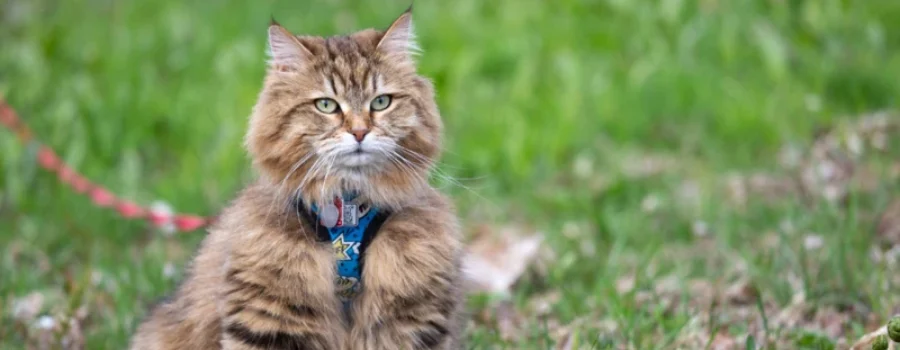It’s a beautiful day and you’re ready to take your American Wirehair kitten out for a walk. You put on their collar and attach the leash, but as soon as you step outside, chaos ensues. Your furry companion starts pulling and meowing uncontrollably, all while trying to dart in every direction. If you’re tired of this scenario and want to enjoy a peaceful walk with your kitten, you’ve come to the right place. Let’s dive into a step-by-step guide to leash training for American Wirehair kittens, so you and your four-legged friend can explore the great outdoors safely and happily.
Why Leash Training is Important for American Wirehair Kittens
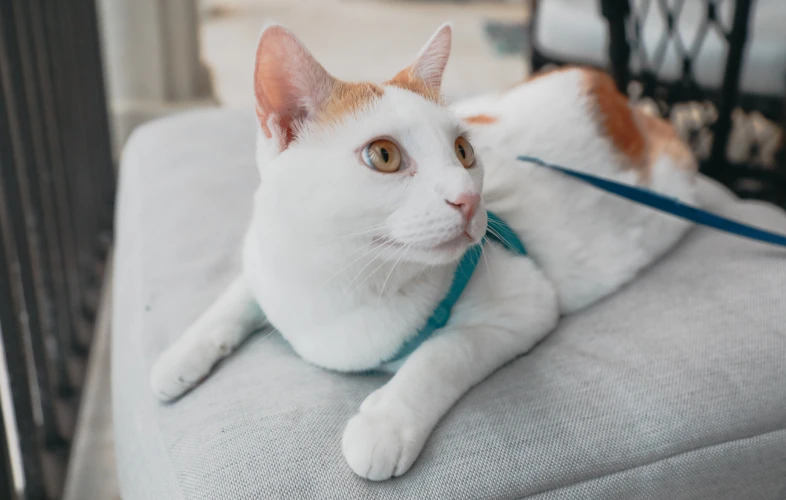
Leash training is an important aspect of raising a well-behaved and happy American Wirehair kitten. It provides mental and physical stimulation for your kitten, ensuring they receive the necessary exercise to maintain good health. Leash training also keeps your kitten safe while outdoors and makes traveling with them more manageable. However, it is important to recognize that leash training requires patience and consistency. In this article, we will explore the benefits of leash training and provide you with a step-by-step guide to make the process as smooth and stress-free as possible. So whether you’re new to leash training or looking for tips to improve your technique, keep reading to learn more. And if you’re interested in specific topics, feel free to check out our other articles on common mistakes, clicker training, and how to train your American Wirehair to walk on a loose leash.
Provides mental and physical stimulation
Leash training for American Wirehair kittens is more than just teaching them to walk with a leash. It provides numerous benefits for them, including mental and physical stimulation.
Mental stimulation is crucial for kittens as it helps develop their cognitive and social skills. When leash training your American Wirehair kitten, they experience new sights, smells, and sounds, making their brains work harder to process their surroundings. Physical stimulation is also vital as it helps maintain their overall health. By leash training your kitten, you ensure they get regular exercise and have an outlet for their energy.
To fully understand the importance of mental and physical stimulation through leash training, take a look at the table below:
| Benefits of Mental and Physical Stimulation for American Wirehair Kittens | Description |
|---|---|
| Improved Cognitive and Social Skills | As kittens explore new environments through leash training, their brains are challenged to process new information. This helps improve their cognitive and social skills as they learn to react to different situations. |
| Better Physical Health | Regular exercise through leash training helps maintain the kitten’s physical health. It also provides an outlet for their energy, preventing destructive behaviors due to boredom. |
| Reduced Anxiety and Stress | Leash training provides a safe and controlled environment for the kitten to explore, reducing their anxiety and stress levels. This is especially important for indoor cats who may not be used to being outdoors. |
Leash training your American Wirehair kitten can be a great way to provide them with the mental and physical stimulation they need to develop and maintain good health. To learn more about leash training, read our step-by-step guide to leash training for American Wirehair kittens or our article on training your American Wirehair to walk on a loose leash.
Ensures kitten’s safety
Leash training is an essential part of ensuring your American Wirehair kitten’s safety when going outdoors. As curious beings, kittens are easily distracted and may run off or get into dangerous situations. By teaching your kitten to walk on a leash, you have better control over their movements and can guide them away from potential hazards.
Some potential safety hazards for kittens include:
| Hazard | Description |
|---|---|
| Traffic | Busy roads or intersections can be dangerous for curious kittens who may dart into traffic. |
| Predators | Outdoor cats are at risk of being attacked by larger predators such as dogs, coyotes, and birds of prey. |
| Poisonous Plants | Kittens may be tempted to eat plants they come across, some of which can be poisonous and cause harm. |
| Other Animals | Outdoor cats may encounter other cats or animals that can be hostile or carry diseases. |
Leash training your American Wirehair kitten can greatly reduce the risk of them getting hurt or lost. With a leash, you can easily steer them away from dangers and keep them close by your side. It also allows you to explore the outdoors together in a controlled and safe manner, creating a stronger bond between you and your furry companion.
Remember, always supervise your kitten when they are outdoors on a leash. Keep a watchful eye on them and be prepared to react quickly in case they get startled or try to escape. By taking the right safety precautions, you can enjoy the benefits of taking your American Wirehair kitten on exciting outdoor adventures while ensuring their well-being.
Makes traveling with your kitten easier
Leash training your American Wirehair kitten is not only beneficial for the kitten’s behavior but also makes it easier to travel with them. With leash training, it becomes easy to take your kitten along with you wherever you go, be it a family vacation or a quick visit to the vet. In this section, we will discuss how leash training your American Wirehair kitten can help make traveling with them easier.
| Benefits of Leash Training | Explanation |
|---|---|
| Less Anxiety | When you leash train your kitten, they become familiar with the surroundings and the process of walking with you. They recognize you as their owner and are less likely to be anxious in new environments. |
| More Control | When you leash train your kitten, you have a better grip on their movements which makes it easy to control them in public places. You can keep them away from dangerous situations and prevent them from getting lost. |
| Easy to Travel | When your kitten is leash trained, you can easily take them along with you on trips. You don’t have to worry about them running off or causing trouble in new settings. They will be comfortable walking with you on the leash in unfamiliar places. |
| Easier to Socialize | Leash training your kitten is a great way to socialize them early on. Taking them out to different places on the leash gives them the opportunity to interact with other people and pets in a controlled setting. |
Leash training not only makes it easier to travel with your American Wirehair kitten, but it also provides mental and physical stimulation for them. Additionally, it ensures their safety in public places and can be a fun bonding experience between you and your kitten. Let’s move on to the next section to learn about when to start leash training your American Wirehair kitten.
When to Start Leash Training Your American Wirehair Kitten

As a new pet owner, it’s important to know when to start leash training your American Wirehair kitten. While some may assume that training can start whenever, there are actually certain age and health requirements that must be met before your kitten can begin leash training. Additionally, there are behavioral indicators to pay attention to that can signal when your kitten is ready to learn this new skill. Let’s take a closer look at when to start leash training your American Wirehair kitten.
Age and Health Requirements
When it comes to leash training American Wirehair kittens, age and health requirements are essential considerations. It is vital to ensure that the kitten is healthy enough to withstand the physical exertion of leash training. Before starting any training program, make sure to clear your kitten’s health by consulting a veterinarian.
| Age of the Kitten | Health Requirements |
|---|---|
| 2-3 Months | At a minimum, the kitten should have received the first round of vaccinations. A general health checkup by a veterinarian is also recommended |
| 4-6 Months | The kitten should have received all basic vaccinations and a comprehensive physical health examination. |
| 6 Months and Older | All necessary vaccinations, a comprehensive physical exam, and the approval of your veterinarian are required before starting leash training. |
However, age is also a key factor to keep in mind. Kittens should be at least two months old to start leash training, as younger kittens are still developing and might not be ready to handle the stress associated with training. On the other hand, kittens that are too old may not be receptive to the training, or may have already developed habits that could make leash training more challenging.
By following these health and age requirements, you can ensure that your American Wirehair kitten is ready to start their leash training and is healthy enough to handle the training. Remember that the wellbeing and safety of your kitten should always be your top priority when it comes to training.
Behavioral Indicators
Leash training your American Wirehair kitten is an important part of their overall development, but it’s crucial to start the training at the right time. While age and health requirements are important factors, it’s also crucial to consider your kitten’s behavior before starting leash training.
Here are some behavioral indicators to look for before starting leash training:
- Your kitten should be comfortable around humans and not easily frightened by everyday sounds and movements.
- They should be curious about exploring their surroundings and not afraid to venture out on their own.
- Your kitten should have a relatively calm demeanor and not exhibit overly aggressive behavior towards people or other animals.
- If your kitten is still primarily focused on sleeping and eating, they may not be ready for leash training just yet.
- It’s important to note that if your kitten shows signs of anxiety or fear, it’s best to wait before starting leash training and work on building their confidence through play and daily interactions.
By paying attention to your American Wirehair kitten’s behavior, you can identify the right time to start leash training and ensure that the process is successful. Remember to always be patient and consistent as you work with your kitten, and to avoid rushing the process or expecting too much too soon.
Supplies You Will Need for Leash Training Your American Wirehair Kitten
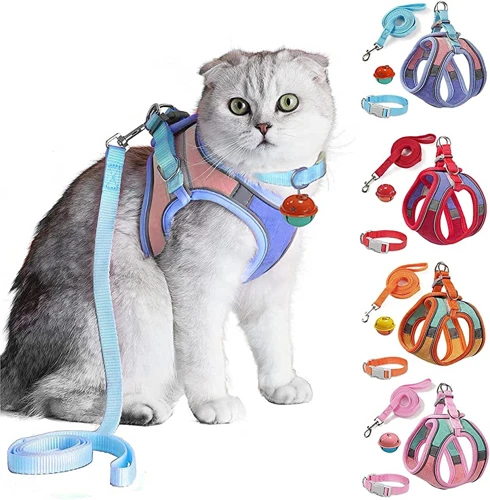
Preparing for leash training your American Wirehair kitten requires gathering the essential supplies that will make the process easier for both you and your furry friend. It is crucial to have the right equipment, treats, and cleaning tools to ensure a successful and comfortable training experience. In this section, we’ll go over the supplies you need to have on hand to set your kitten up for success.
Leash and Collar
When it comes to leash training your American Wirehair Kitten, choosing the right leash and collar is essential for a safe and successful training experience. Let’s take a look at some of the options you have for choosing the right leash and collar for your furry friend.
| Option | Description | Considerations |
|---|---|---|
| Standard Leash | A leash made of nylon or leather, usually 4 to 6 feet long, with a clip to attach to the collar. | Provides more control and easy communication with your kitten during training. Consider the weight of the leash and how it feels in your hand. |
| Retractable Leash | A leash that can be extended and retracted, allowing your kitten more freedom to explore and walk at their own pace. | Provides freedom for your kitten but can be difficult to control in busy or high traffic areas. Keep in mind that the retractable mechanism can frighten some cats. |
| Harness | A device that wraps around your kitten’s body, often with straps around the neck and chest, and a D-ring for attaching the leash. | May provide added comfort and prevent choking. Make sure the harness is properly fitted to your kitten’s body and doesn’t cause discomfort. |
| Collar | A simple collar that goes around your kitten’s neck, often with a buckle or snap closure, and a D-ring for attaching the leash. | An easy and comfortable option for kittens who don’t pull or tug on the leash. Make sure the collar is properly fitted and doesn’t cause discomfort. |
When choosing a leash and collar for your American Wirehair Kitten, it’s important to consider your kitten’s specific needs and behavior during training. You want to make sure your kitten is safe and comfortable, while also having the ability to communicate and guide them during the training process. Take the time to choose the right equipment, and you’ll likely have a more successful training experience.
Treats and Toys
When it comes to leash training an American Wirehair kitten, treats and toys can be incredibly helpful in encouraging good behavior and making the training process enjoyable for your kitten. Here are some of the most important treats and toys you’ll need:
| Treats | Toys |
|---|---|
| Soft and smelly treats: Look for treats that are easy to chew and have a strong smell that will entice your kitten. | Interactive toys: Toys that move or make noise can keep your kitten engaged and help distract them during training. |
| Training treats: Small, bite-sized treats that your kitten can quickly consume are perfect for rewarding good behavior during training sessions. | Puzzle toys: Puzzle toys that require your kitten to work for treats or toys can help improve their problem-solving and focus skills. |
| High-value treats: Save these extra-special treats for when your kitten accomplishes a major milestone, like walking a longer distance or staying calm around other animals. | Noise-making toys: Toys that make a noise when squeezed or played with can help get your kitten’s attention during training sessions and make the experience more fun! |
Remember to use treats and toys in moderation. You want your kitten to focus on learning and behavior, not just on receiving treats or playing with toys. Use them as a tool to reward good behavior and positive reinforcement during training sessions. By doing so, you’ll be able to make the training process a positive and rewarding experience for both you and your American Wirehair kitten.
Training Pads and Cleaning Supplies
When it comes to leash training your American Wirehair kitten, accidents are bound to happen. That’s why it’s important to have the right training pads and cleaning supplies on hand. Here are some items you’ll need:
- Training Pads: Stock up on training pads that are specifically designed for cats. These pads are made of an absorbent material that quickly soaks up urine and helps prevent leaks and spills.
- Cleaning Solution: Choose a cleaning solution that is safe for use around cats and is designed to remove urine and feces stains. Avoid using products that contain harsh chemicals or bleach, as these can be harmful to your kitten.
- Pet Stain Remover: For more stubborn stains and odors, invest in a high-quality pet stain remover. Look for products that use natural ingredients and are specifically formulated for use on cat urine and feces stains.
- Pet Odor Eliminator: Leash training accidents can leave behind a lingering odor that can be difficult to eliminate. Use a pet odor eliminator to help neutralize the smell and keep your home smelling fresh.
Having these essential training supplies on hand will make the process of leash training your American Wirehair kitten much easier and more manageable. Even with proper training, accidents can still happen, so being prepared will help minimize stress and ensure that your kitten stays happy and healthy.
Step-by-Step Guide to Leash Training Your American Wirehair Kitten
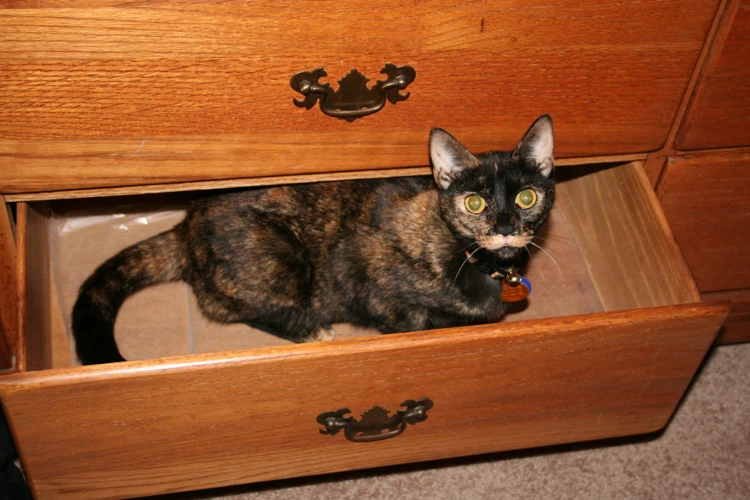
Leash training your American Wirehair kitten can be an exciting and rewarding experience, but it can also pose some challenges. By following a step-by-step guide, you can ensure a successful and stress-free training process for both you and your kitten. With a little patience and consistency, your kitten can learn to walk calmly on a leash and enjoy the great outdoors. Let’s dive into the details on how to do it!
Introduce the collar and leash
Introducing your American Wirehair kitten to a collar and leash is the first step in leash training. It’s important to take this process slowly and carefully to ensure your kitten is comfortable and relaxed. Here is an overview of the steps for introducing your kitten to the collar and leash:
| Step 1: Choose a lightweight collar and leash that fits snugly but comfortably. |
| Step 2: Allow your kitten to inspect the collar and leash by placing them on the ground. Encourage them to play with the leash and explore the collar. |
| Step 3: Once your kitten is comfortable with the collar and leash on the ground, attach the collar to your kitten’s neck and let them wear it for short periods of time while supervised. |
| Step 4: Gradually increase the amount of time your kitten wears the collar and leash. Provide treats and praise to encourage them to wear it without fussing. |
It’s important to note that some kittens may be resistant to wearing a collar or leash at first. It’s normal for kittens to paw at the collar or try to scratch it off. Be patient and offer treats and praise to encourage your kitten to wear the collar and leash without fussing. Additionally, never leave your kitten unattended while wearing a collar and leash to prevent any accidents or injuries. Taking these steps will help your kitten become comfortable with the collar and leash, setting them up for successful leash training in the future.
Let your kitten get used to the collar and leash
After getting your American Wirehair kitten comfortable with wearing a collar, the next step in leash training is to let them get used to wearing a collar and leash together. This can be a new sensation for your kitten, so it’s important to introduce them slowly and gently.
Step 1: Place the collar on your kitten and let them wear it for a short period of time. Offer them treats and praise to create a positive association with wearing the collar.
Step 2: Once your kitten is comfortable wearing the collar for longer periods of time, attach a lightweight leash to it. Allow your kitten to drag the leash around while supervised, so they can get used to the weight and sensation.
Step 3: After your kitten has figured out that the leash won’t harm them, hold onto the end of the leash and follow your kitten around indoors. Use treats and praise to encourage positive behavior.
Step 4: Practice walking your kitten indoors before moving on to outdoor training sessions. Encourage the kitten to walk towards you, either by using a treat or a favorite toy as a lure.
| Mistakes to Avoid: | Solutions: |
|---|---|
| Being too forceful and pulling on the leash | Use treats and positive reinforcement to encourage your kitten to follow you |
| Allowing your kitten to become tangled or caught in the leash | Monitor your kitten while they explore and play with the leash |
| Becoming frustrated if your kitten doesn’t respond well | Be patient and keep training sessions short to avoid overwhelming your kitten |
It’s important that your kitten is comfortable and confident with leash training before moving forward. Taking the time to let them get used to wearing a collar and leash will make future training sessions easier and more effective. Remember to use treats and positive reinforcement to encourage good behavior, and always monitor your kitten’s comfort and safety.
Start indoors without distractions
Start indoors without distractions
Indoor training is the first step towards leash training your American Wirehair Kitten. It’s best to start in a quiet room with fewer distractions to ensure that your kitten stays focused. Here are some tips to get started with indoor training:
| Tips for Indoor Training |
|---|
| Choose a quiet room with minimal distractions |
| Attach the leash to the collar and let your kitten wear it for a few minutes each day to get used to it |
| Play with your kitten while the leash is attached to the collar to get her more used to the feeling of the leash |
| Praise and reward your kitten with treats when she behaves well and doesn’t try to remove the leash |
| Don’t force your kitten to wear the leash if she’s feeling uncomfortable or scared. Let her take her time to adjust to the new sensation |
Starting with indoor training helps your kitten associate the leash with a positive experience and comfortable feelings. Once she’s comfortable with wearing the leash indoors, you can progress to outdoor leash training where there are more distractions, sounds and smells. Remember to take it slow, praise often and remember that every kitten is different – some may take longer to adjust to leash training than others.
Move training sessions outdoors
As your American Wirehair kitten becomes more comfortable with the collar and leash indoors, it’s time to take the training outside. Before moving outdoors, ensure that your kitten has all the necessary vaccinations and is in good health condition. It’s also vital to check the weather conditions to ensure your kitten’s safety, as extreme temperatures can be harmful to their health.
To move training sessions outdoors, follow these steps:
| Step 1: | Take your kitten to a quiet and secure outdoor space, such as a fenced yard or quiet park. Avoid crowded or noisy areas that may frighten your kitten and make it difficult to focus on the training sessions. |
| Step 2: | Walk slowly alongside your kitten on the leash while gently guiding them with treats or toys. Encourage your kitten to follow you by calling its name and rewarding its behavior with praise and treats. |
| Step 3: | Gradually increase the duration of the walks outdoors. Start with short walks of 5-10 minutes and gradually increase the time based on your kitten’s comfort level. |
| Step 4: | Pay attention to your kitten’s behavior during outdoor training sessions. If it appears anxious or overwhelmed, take a break or return indoors and try again later. Remember to reward positive behavior and reinforce good training habits. |
Moving training sessions outdoors can be an exciting and enriching experience for your American Wirehair kitten, providing them with the necessary mental and physical stimulation they need to thrive. However, it’s essential to be patient and consistent with the training, paying attention to your kitten’s needs and comfort level throughout the process. By following these steps, you can help your kitten become a confident and well-trained companion during outdoor adventures.
Use treats and positive reinforcement
One of the most effective ways to train your American Wirehair kitten on a leash is through positive reinforcement using treats. Treats will be a motivating factor for your kitten, making it more likely they will comply with training. Here are some tips to keep in mind:
- Choose small, soft treats that your kitten can eat quickly and easily. Avoid treats that are too hard to chew or may be a choking hazard.
- Start by giving your kitten a treat every time they allow you to put the collar or harness on them, or when they walk on the leash without resistance. This will help your kitten associate wearing the leash with a positive experience.
- Praise and reward your kitten with treats when they follow your lead, such as walking beside you or following you in a specific direction.
- Gradually decrease the frequency of treats as your kitten becomes more comfortable with walking on the leash. Instead, offer verbal praise along with the occasional treat to keep your kitten motivated.
- If your kitten resists or tries to remove the collar or harness, resist the urge to punish or scold them. Instead, remain calm and offer treats when they comply with wearing their gear.
Remember, positive reinforcement is key to training your American Wirehair kitten on a leash. By providing treats and praise, you’ll build trust with your kitten and make the process more enjoyable for everyone involved.
Gradually increase the duration of walks
When leash training your American Wirehair Kitten, it’s important to gradually increase the length of your walks together to prevent overwhelming the kitten. Here are some tips to help with this process:
Start Small: Begin by taking short walks, just a few minutes long, and slowly increase the length of each walk by a few minutes each session.
Observe Your Kitten: Pay attention to your kitten’s behavior during walks. If they seem to be getting tired or overwhelmed, they may be indicating that the walk is too long for their current level of comfort.
Take Breaks: Take breaks during walks to allow your kitten to rest and hydrate. This can also help prevent accidents or hyperactivity.
Vary Your Routes: To keep things interesting and prevent boredom, vary the routes you take on your walks. This can also help your kitten become more confident and comfortable with new environments.
Be Patient: Remember that every kitten is unique and will progress at their own pace. Be patient with your kitten and celebrate each milestone they achieve in their leash training journey.
By following these tips and gradually increasing the duration of walks, you can help your American Wirehair Kitten become confident and comfortable on their leash, and enjoy many happy walks together in the future.
Be patient and consistent
Leash training your American Wirehair kitten can be a challenging task, but it can also be a rewarding experience for you and your pet. Patience and consistency are the key factors that will help you successfully train your kitten to walk on a leash.
| Be Patient | Be Consistent |
|---|---|
| Do not rush the training process. Some kittens may take longer than others to get used to the leash and collar. Remember that your kitten is learning a new skill, and it may take some time for them to feel comfortable. Do not get frustrated or angry if your kitten does not seem to be making progress as quickly as you hoped. | Try to establish a regular routine for your training sessions. If possible, train your kitten at the same time every day. Choose a location that is quiet and free from distractions. This will help your kitten focus on the training and avoid any major distractions. |
| Give your kitten lots of praise and rewards for their efforts. This will encourage your kitten to continue trying, and they will associate the leash and collar with positive experiences. Remember to be patient and give your kitten time to learn and adjust. | Use the same training methods and techniques each time you train your kitten. Be consistent with your expectations and reinforce the desired behavior with positive reinforcement. Avoid using negative reinforcement or punishment as this may cause your kitten to become fearful or anxious about training. |
| Remember that your kitten is still developing physically and mentally. Their attention span may be short, and they may get tired easily. Be mindful of your kitten’s limits and try not to overexert them. | Stay positive and focused during the training session. Avoid getting distracted by other things, and always keep your attention on your kitten. This will help you catch any undesirable behaviors early on and correct them before they become habits. |
In conclusion, patience and consistency are critical when it comes to leash training your American Wirehair kitten. With time, patience, and consistency, your kitten will learn to walk on a leash and enjoy the benefits of being able to explore the outdoors with you. Remember to stay positive, use positive reinforcement, and enjoy the journey!
Common Mistakes to Avoid When Leash Training Your American Wirehair Kitten
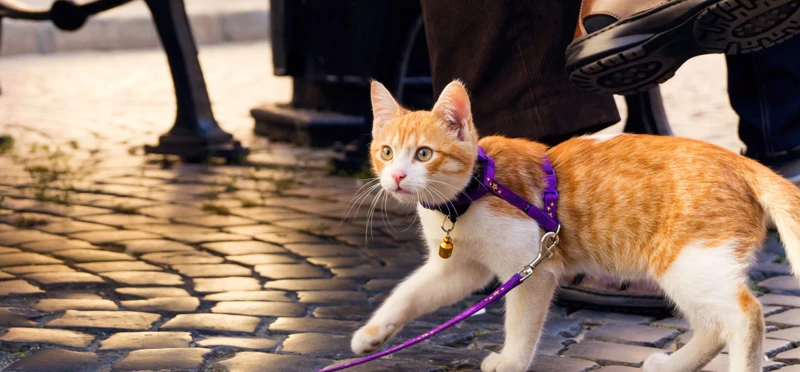
As with any type of training, there are common mistakes that can be made when trying to leash train your American Wirehair kitten. It’s important to avoid these mistakes to ensure that the training process is positive for both you and your kitten. By being aware of these mistakes, you can take steps to prevent them and make the training experience as smooth as possible. Let’s take a look at some of the common mistakes to avoid when leash training your American Wirehair kitten.
Being harsh or impatient
One of the common mistakes that pet owners make while leash training their American Wirehair kittens is being harsh or impatient. Aggressiveness towards your kitten can lead to fear and mistrust, which can make the whole process more difficult. Instead of being harsh, use positive reinforcement to encourage good behavior. Positive reinforcement can be in the form of treats or verbal praise. Being impatient can also hinder your kitten’s progress. Kittens learn at their own pace, so it’s important to be patient and allow them the time they need to adapt to their new training. Remember, every kitten is unique and will have different personalities and learning speeds.
| Mistakes | Consequences | Alternatives |
|---|---|---|
| Harshness towards your kitten | Can lead to fear and mistrust | Use positive reinforcement to encourage good behavior |
| Impatience | Can hinder progress | Be patient and allow your kitten the time they need to adapt to their new training |
It’s important to remember that leash training should be a fun and enjoyable experience for both you and your American Wirehair kitten. By avoiding these common mistakes and following the step-by-step guide provided, you can ensure a successful and positive training experience for your furry friend.
Expecting too much too soon
We all want to see quick results when it comes to training our American Wirehair kittens how to walk on a leash. However, it is important to remember that like any other form of training, leash training requires time, patience, and consistency.
Expecting too much too soon can set back your kitten’s progress and make the training process frustrating for both you and your pet. It is essential to understand that every kitten is different, and they learn at their own pace. It’s crucial to tailor your training sessions to your kitten’s abilities and progress.
To avoid expecting too much too soon, it’s vital to have realistic expectations and set achievable goals. Remember to break down the training process into small steps that your kitten can master before moving on to the next one. Celebrate your kitten’s progress along the way and never rush the training process.
Here are a few examples of realistic goals you can set for your kitten during leash training:
| Training Stage | Realistic Goals |
| Introducing the collar and leash | Wearing the collar for a few minutes without fussing or scratching; letting the leash drag behind them without getting scared |
| Start indoors without distractions | Walking on the leash for a few minutes without distractions; stopping and sitting on command |
| Move training sessions outdoors | Walking on the leash for a few more minutes in a quiet area of the park or backyard |
| Gradually increase the duration of walks | Walking on the leash for longer periods and in more distracting environments |
Remember, the key to successful leash training is to take it slow and steady. By setting achievable goals and celebrating your kitten’s progress, you can help them master the skill of walking on a leash while fostering a strong bond between you and your pet.
Not giving enough positive reinforcement
When leash training your American Wirehair kitten, it’s important to remember that positive reinforcement is key. If you don’t offer enough of it, your kitten may become discouraged and disinterested in the training process.
Here are some things to keep in mind to make sure your kitten receives enough positive reinforcement:
- Use treats: Offer your kitten small, bite-sized treats as rewards for following your commands and walking on the leash. Treats should be given immediately after the desired behavior is completed to reinforce the positive association.
- Offer verbal praise: In addition to treats, make sure to verbally praise your kitten as well. Say things like “Good job!” or “You’re doing great!” in a happy tone.
- Establish a routine: Establishing a consistent routine for your kitten’s training will help them feel more comfortable and confident. Be sure to offer consistent praise and rewards throughout the training sessions.
- Be patient: Leash training can take time, so be patient with your kitten. They may not get it right away, but with enough positive reinforcement, they’ll eventually learn what you’re trying to teach them.
By using a combination of these techniques, you can ensure that your American Wirehair kitten feels encouraged and motivated during their leash training. Remember, positive reinforcement is key to successful training, so make sure to offer plenty of praise and treats along the way.
Using the wrong type of collar or leash
Using the wrong type of collar or leash is a common mistake that pet owners make when leash training their American Wirehair kittens. It’s important to choose the right equipment for your kitten’s safety and comfort.
Here are some examples of collars and leashes to consider:
| Collars | Leashes |
|---|---|
| Flat collar | Standard leash |
| Breakaway collar | Retractable leash |
| Adjustable collar | Chain leash |
| Safety collar | Bungee leash |
A flat collar is a simple and affordable option that sits around your kitten’s neck. It’s designed to be comfortable and lightweight, but it can be easily pulled off if your kitten gets caught on something. For added safety, a breakaway collar is designed to release when enough force is applied, preventing choking or injury.
An adjustable collar is versatile because it can be adjusted to the size of your kitten, making it effective as your kitten grows. A safety collar has a reflective strip or source of light attached to it, increasing your kitten’s visibility at night.
When it comes to leashes, there are different types to choose from. A standard leash is a basic option that is most appropriate for calm kitties. A retractable leash gives your kitten more freedom to move around, but they can be dangerous because they can quickly retract and cause injury. A chain leash can be used for stronger, more active kitties who may break a standard leash. A bungee leash can help prevent injury to both you and your kitten by acting as a shock absorber if your kitten pulls on the leash suddenly.
Choosing the right collar and leash will make the difference between a successful and safe training experience and a traumatic one. Always keep in mind your kitten’s individual temperament, age, and size when selecting the appropriate equipment.
Troubleshooting Leash Training Issues with Your American Wirehair Kitten
Even when following a step-by-step guide to leash training your American Wirehair kitten, issues may arise that cause frustration for both you and your pet. Don’t worry, this is completely normal! With a little troubleshooting and patience, you can overcome these obstacles and continue to make progress in your kitten’s leash training journey. Here are some common issues that may arise and how to overcome them.
Pulling on the leash
Pulling on the leash can be a common issue when leash training American Wirehair kittens. But before we discuss how to address this problem, it’s important to understand why kittens pull on leashes in the first place.
The main reasons why kittens pull on leashes are:
| Reasons | Solutions |
|---|---|
| Kittens are curious and want to explore | Allow them to explore within reason and use positive reinforcement to reward good behavior |
| Kittens are excited and want to play | Redirect their energy into play exercises before and after walks |
| Kittens don’t want to walk on a leash | Gradually introduce the concept of walking on a leash and use treats to reward good behavior |
Now, when it comes to addressing pulling on the leash, it’s important to avoid harsh methods or punishment as this can lead to other behavioral issues. Instead, try these techniques:
1. Stop and stand still – If your kitten starts to pull on the leash, stop moving and stand still until they come back to you. Use verbal cues, such as “come” or “heel,” and reward them when they follow through.
2. Change directions – When you notice your kitten starting to pull, quickly change directions and continue walking in the opposite direction. This will make your kitten stop and re-orient themselves to you, teaching them to pay attention to your movements.
3. Use a no-pull harness – A no-pull harness gently pulls your kitten’s body to the side when they start to pull, making it uncomfortable for them to continue. This teaches your kitten to walk by your side without pulling.
4. Increase the distance between you and your kitten – If your kitten is consistently pulling on the leash and refusing to listen, try increasing the distance between you and your kitten. This can help them focus on your movements and follow your lead without the temptation of distractions.
By using these techniques, you can help your American Wirehair kitten learn to walk on a leash without pulling. Remember to always use positive reinforcement and be patient and consistent in your training.
Refusing to walk on the leash
If your American Wirehair kitten is refusing to walk on the leash, there may be several reasons why. Here are some possible causes and solutions:
- Lack of confidence: Some kittens may be afraid or intimidated by the leash and collar, causing them to refuse to move. To build your kitten’s confidence, start by letting them wear the collar and leash around the house for short periods of time. Encourage them with treats and positive reinforcement. Gradually increase the length of time they wear the leash while indoors, until they seem comfortable and confident enough to move around.
- Unfamiliar surroundings: If your kitten is used to a certain environment, such as the comfort of their own home, they may feel uncomfortable or frightened in unfamiliar outdoor spaces. Start by taking them to a quiet and familiar outdoor area where they won’t feel overstimulated. Let them explore at their own pace while gently urging them to walk on the leash using treats and positive reinforcement.
- Medical issues: Your kitten may be refusing to walk on the leash due to an underlying medical condition or physical discomfort. If you have ruled out behavioral or environmental issues, it’s important to take your kitten to the vet to be examined.
- Leash or collar discomfort: If your kitten is uncomfortable with their leash or collar, they may refuse to walk or move. Make sure their collar is fitted properly and isn’t too tight or too loose. Additionally, try using a lightweight and comfortable leash that won’t weigh them down or cause discomfort.
- Patience and consistency: Leash training can be a long process, and some kittens may take longer to get used to walking on a leash than others. Be patient and consistent with your training techniques and always reward your kitten with treats and positive reinforcement. With time and patience, your American Wirehair kitten should learn to walk comfortably on a leash.
Remember, it’s important to never force your kitten to walk on the leash if they are feeling uncomfortable or scared. Take the time to work with your kitten and provide them with the support and encouragement they need to grow comfortable with the leash. By following these tips and being consistent with your training techniques, you can help your kitten become a confident and happy little walker.
Getting distracted by nearby animals or people
One of the common difficulties that you may face when leash training your American Wirehair kitten is their tendency to get easily distracted by nearby animals or people. You can’t completely eliminate these distractions, but you can train your kitten to focus on you and minimize the impact of these distractions.
Here are some tips to handle your kitten’s distractions during leash training:
| Tip | Description |
|---|---|
| Keep treats handy | Carry treats with you during walks to get your kitten’s attention if they start to get distracted. Use high-value treats, such as small pieces of cooked chicken or tuna, to keep your kitten focused on you. |
| Redirect their attention | When your kitten gets distracted, redirect their attention to you with treats or toys. This way, they will learn to associate distractions with getting rewards from you. |
| Stay calm and patient | If your kitten gets distracted, avoid getting frustrated or angry. Instead, use a calm and positive tone of voice to get their attention back on you. |
| Take breaks | If your kitten is getting too distracted, take a break and give them time to relax and regain their focus. You can also go back to practicing indoors without distractions before moving on to outdoor walks again. |
| Practice in different environments | Gradually expose your kitten to different environments, such as busy parks or shopping centers, to help them get used to distractions. Start with quiet places and gradually increase the level of distraction as your kitten gets more confident. |
Remember not to punish or yank the leash when your kitten gets distracted as this may scare and stress them. Instead, use positive reinforcement to keep their focus on you and gradually increase their tolerance to distractions. By following these tips, you can successfully train your American Wirehair kitten to walk on a leash without getting easily distracted.
Becoming anxious or frightened
Leash training can be a stressful experience for some American Wirehair kittens, causing them to become anxious or frightened. This can manifest in a variety of ways, from pulling away from the leash to cowering or hiding. If your kitten is exhibiting signs of anxiety or fear during leash training, it’s important to address the issue in a calm and patient manner.
One common reason for anxiety during leash training is the introduction of unfamiliar surroundings. To alleviate this, consider starting your training sessions in a quiet, enclosed area such as your backyard or a nearby park with limited distractions. Gradually introduce new environments once your kitten is more comfortable.
Another reason for anxiety during leash training can be due to discomfort caused by the leash or collar. Make sure the collar and leash fit properly and aren’t too tight or too loose. If your kitten continues to exhibit signs of discomfort, try using a harness instead of a collar to distribute pressure more evenly.
It’s also important to monitor your own behavior during leash training. If you become frustrated or impatient, your kitten may pick up on your negative energy and become even more anxious. Stay calm and patient, and reward your kitten with treats and praise when they exhibit positive behaviors.
If your kitten continues to exhibit anxiety or fear during leash training, consider seeking advice from a professional trainer or behaviorist. They can provide valuable insights and techniques to help make the process more comfortable for your kitten.
| Causes of Anxiety During Leash Training | How to Address the Issue |
|---|---|
| Unfamiliar surroundings | Start training in a quiet, enclosed area and gradually introduce new environments |
| Discomfort caused by the leash or collar | Ensure proper fit or switch to a harness |
| Owner’s behavior | Stay calm and patient, reward positive behaviors |
| Underlying behavioral issues | Seek advice from a professional trainer or behaviorist |
Conclusion
After following the step-by-step guide to leash training your American Wirehair kitten, you may find that it takes some time and patience to get your kitten fully comfortable with walking on a leash. However, the benefits of leash training are worth the effort.
By providing mental and physical stimulation, leash training can help improve your kitten’s overall health and well-being. It also ensures your kitten’s safety by keeping them close to you and preventing them from running off or getting into dangerous situations.
In addition, leash training makes it easier to bring your American Wirehair kitten along on outings and adventures. You can enjoy walks together in the park, visits to pet-friendly stores, and even travel by car or plane without the worry of your kitten escaping or getting lost.
Remember to start leash training at the appropriate age and health requirements, using the right supplies and positive reinforcement techniques. Avoid common mistakes and troubleshoot any issues that may arise. With patience and consistency, your American Wirehair kitten will become a confident and well-trained companion on the leash.
Frequently Asked Questions
1. Can all American Wirehair kittens be leash trained?
Yes, all American Wirehair kittens can be leash trained with patience and consistency.
2. Is it necessary to leash train indoor cats?
It is not necessary, but it can provide mental stimulation and possibly prevent boredom-related behavior issues.
3. Can a harness be used instead of a collar for leash training?
Yes, a harness can be used and may be a better option for some kittens, especially those with respiratory issues.
4. How long should each leash training session be?
Start with short sessions of 5-10 minutes and gradually increase the duration as your kitten becomes more comfortable.
5. What treats are best for leash training rewards?
Soft, small, and smelly treats such as freeze-dried chicken or salmon are often effective for training rewards.
6. Is it important to clean up after your kitten during leash training walks?
Yes, it is important to bring along cleaning supplies and clean up after your kitten during walks to be a responsible pet owner.
7. Should I use a retractable leash for my American Wirehair kitten?
No, it is not recommended to use a retractable leash for leash training as it can be difficult to control the length and can pose a danger to your kitten.
8. How can I tell if my kitten is ready to move to outdoor leash training?
Your kitten should be comfortable wearing a collar/harness and leash and walk comfortably indoors without getting scared or distracted before moving to outdoor training.
9. Can leash training help with behavioral issues in American Wirehair kittens?
Leash training can provide mental stimulation and exercise, which can help prevent boredom-related behavioral issues in American Wirehair kittens.
10. Can an older American Wirehair cat be leash trained?
Yes, older American Wirehair cats can also be leash trained, but it may take more patience and time for them to adjust to the process.

